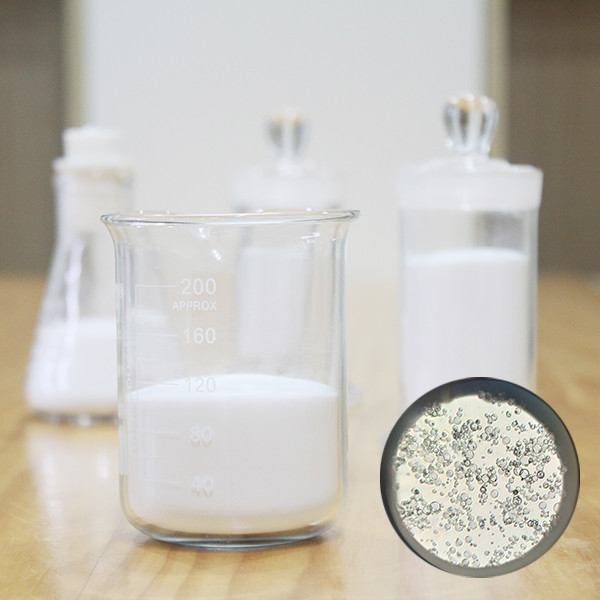Aerospace Accessories Hollow Glass Bubble HN20 Thermal Insulation Materials
Product Specifications
| Attribute |
Value |
| Product name |
HN20 glass microspheres |
| Application |
Aviation Material |
| Diameter |
30-105 µm |
| Density |
0.15-1.0 g/cm³ |
| Compressive Strength |
500 psi |
| Chemical Composition |
SiO2, Na2O, CaO, MgO, Al2O3 |
| Color |
White or transparent |
| True Density |
0.18-0.22 |
| Bulk Density |
0.10-0.12 |
| Dielectric Constant |
1.2-2.2(100MHZ) |
| Thermal Conductivity |
0.07 |
Product Description
Hollow glass bubbles, also known as glass microspheres, are lightweight, high-strength, and low-density particles with numerous applications in the aviation industry.

Key Applications
- Lightweight fillers: Used in aircraft composites to reduce weight and improve fuel efficiency
- Aerospace sealants: Enhances bonding properties while reducing weight in sealants and adhesives
- Anti-static agents: Prevents static electricity buildup in aircraft components like fuel tanks
Technical Specifications
| Model |
True Density (g/cm³) |
Bulk Density (g/cm³) |
Compressive Strength (psi) |
Diameter (µm) |
D10 |
D50 |
D90 |
| HN20 |
0.18-0.22 |
0.10-0.12 |
500 |
25 |
70 |
105 |
Product Advantages
Light weight, enhanced stability, and superior thermal insulation properties.
Why Choose Our Hollow Glass Bubbles?
- Specialized in manufacturing Hollow Glass Bubbles for over 20 years
- Ranked among the largest HGB manufacturers globally
- Guaranteed product quality with comprehensive testing capabilities
- Consistent product performance and reliability as our top priority
Frequently Asked Questions
Can you tell me more about package details of Hainuo HGBs?
We offer package options including cartons and ton bags, with dimensions varying by model and density. Customers can discuss preferred packaging plans with our team in advance.
For specialized application requirements, we provide customized packaging solutions through direct consultation with our technical team.
What is the history and achievements of Hainuo Technology?
Founded in 2011 with research backing from government institutions, Hainuo Technology has achieved significant technological breakthroughs and ranks among the most competitive global manufacturers.
We've received numerous national honors including "High-Tech Enterprise" and "Outstanding Enterprise in Shanxi Province," with our products used in major national projects by CNPC and CNOOC.
What precautions should be taken when handling HGB packages?
Unpack in well-ventilated areas, gently remove packaging bands, and minimize vibration during handling to control dust emission.
For individuals with dust allergies, we recommend using protective eyewear and gloves during handling.
What are the advantages of using hollow glass bubbles?
They provide thermal insulation, improve fluidity and stiffness, enhance strength endurance, and increase chemical resistance while reducing weight.
What are common applications of hollow glass bubbles?
Widely used in aerospace, rubber, plastic, marine, and construction industries as lightweight fillers that improve performance and reduce production costs.
What is the density and size range of Hainuo HGBs?
Typical density ranges from 0.11-0.606 g/cm³ with sizes from 10µm to 115µm, varying by application requirements.
Are Hollow Glass Bubbles environmentally friendly?
Yes, made from natural sand, they are recyclable and cause no environmental harm. We maintain strict environmental standards throughout production.
Can Hollow Glass Bubbles be used in 3D Printing?
Yes, they can be added to 3D printing materials to reduce weight, improve strength, enhance printability, and minimize warping.
Can Hollow Glass Bubbles be used in Concrete?
Yes, they serve as lightweight aggregates that improve thermal insulation, fire resistance, workability, and durability of concrete.
What is Hainuo's annual production capacity?
Current capacity is 15,000 tonnes annually, expanding to over 35,000 tonnes by 2026 with our second production line.
What are the storage requirements for Hollow Glass Bubbles?
Store in dry, cool areas away from direct sunlight and moisture. Keep packages tightly sealed to prevent particle emission.

 Your message must be between 20-3,000 characters!
Your message must be between 20-3,000 characters! Please check your E-mail!
Please check your E-mail!  Your message must be between 20-3,000 characters!
Your message must be between 20-3,000 characters! Please check your E-mail!
Please check your E-mail! 


